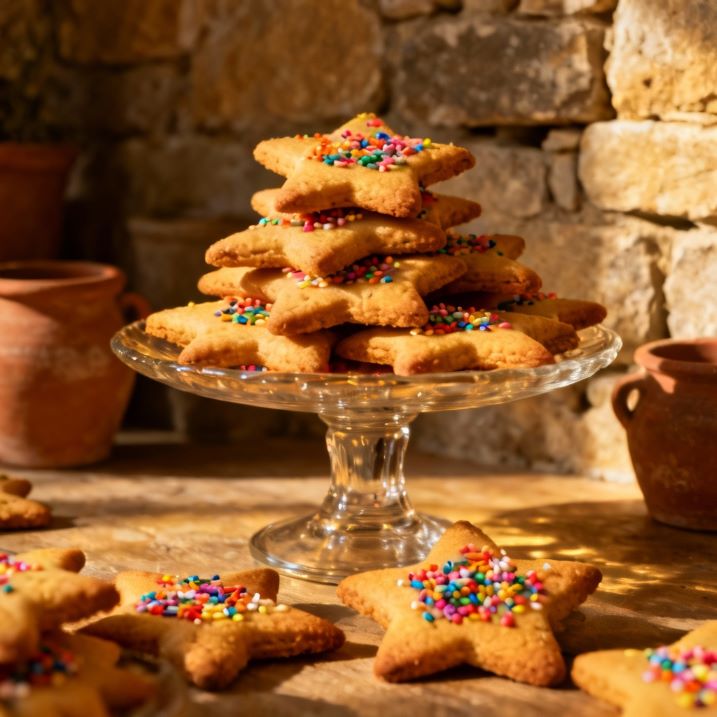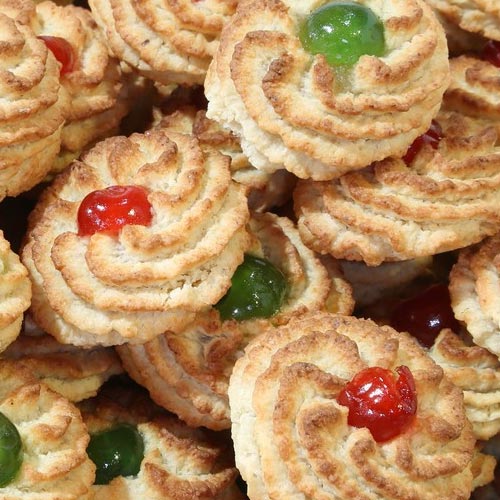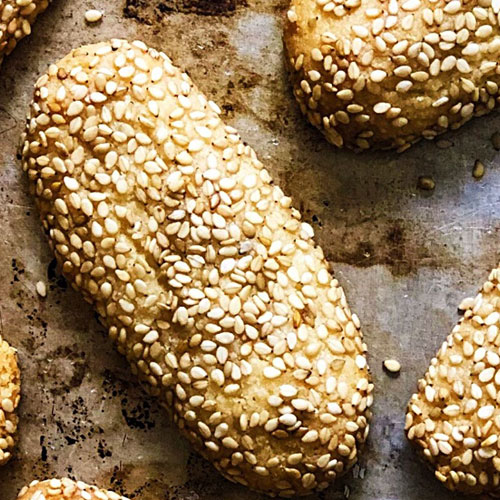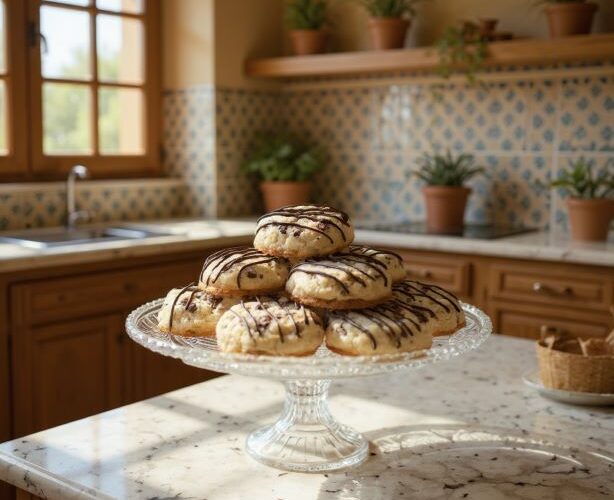Befanini: The Sweet Taste of an Italian Epiphany
Soft, buttery, and sprinkled with color, Befanini cookies offer a joyful bite of Tuscan tradition. Originating from the charming towns of Lucca and Versilia, these festive treats come to life every year in celebration of La Befana, Italy’s beloved gift-giver of the Epiphany.
While January 6th marks the official end of the holiday season, Italians see it as one final, magical celebration. At the heart of this moment? A warm plate of freshly baked Befanini. Their golden tops shine with egg wash and sugar, and their cheerful shapes, stars, hearts, animals, and sometimes even whimsical witches bring smiles to children and adults alike.
More Than a Cookie -It’s a Family Tradition
Befanini are more than just cookies; they’re a holiday ritual. Year after year, families gather in the kitchen to roll out dough, cut playful shapes, and decorate together. The process gets a little messy, but that’s part of the fun, flour on the table, sprinkles on the floor, and laughter in the air.
Even better, the recipe is wonderfully simple. You won’t need anything fancy, just pantry staples and a few flavorful touches. Think vanilla, lemon zest, maybe a splash of rum or anise, and a big helping of love.
From start to finish, Befanini cookies bring people together through tradition, through flavor, and through the shared joy of baking something meaningful.

La Befana: Italy’s Good Witch of the Epiphany
So, who is La Befana? She’s a beloved figure in Italian folklore, a kind, broom-flying woman who delivers sweets and gifts to children on Epiphany Eve, January 5th.
Yes, she looks a bit like a witch. But don’t be fooled. She’s more like a magical Nonna. Wrapped in a shawl, covered in chimney soot, and full of heart, she rewards good children with candy. Naughty ones? They get coal though it’s usually sugar, too.
According to legend, the Three Wise Men once asked La Befana for directions to Bethlehem. She said no, too busy sweeping. Later, she changed her mind and set out to find the baby Jesus. She never did. Now, she visits every child, hoping one of them might be Him.
That’s why on Epiphany, stockings hang by the fireplace, and the smell of Befanini fills the house. It’s the last sparkle of the season and one of its sweetest.
Whether you’re keeping an old tradition alive or starting a new one, Befanini cookies bring a little Tuscan magic to your table. They’re fun to bake, perfect to share, and full of meaning.
Variations with Alcohol
Many traditional Befanini recipes include a splash of alcohol for added depth and aroma. While it’s optional, a little liqueur can elevate the flavor and add a nostalgic touch. Here are a few delicious variations to try:
Rum (Classic)
Why use it? Rum is the most traditional alcohol used in Befanini. It adds a warm, slightly sweet flavor that pairs beautifully with citrus zest.
How much? Add 1 to 2 tablespoons of dark or golden rum to the dough.
Flavor profile: Rich, warm, and slightly spiced.
Anise Liqueur (Authentic & Aromatic)
Why use it? Anise is another classic flavor in Italian desserts, especially in Tuscany. It gives the cookies a subtle licorice-like aroma.
How much? Use 1 tablespoon of anise liqueur like Sambuca or Anisette.
Flavor profile: Herbal, sweet, and distinctly Italian.
Grand Marnier or Cointreau
Why use it? These orange liqueurs complement the lemon or orange zest in the dough, enhancing the citrusy notes.
How much? Add 1 tablespoon for a light, fragrant twist.
Flavor profile: Bright, citrusy, and slightly floral.
Vin Santo or Marsala Wine
Why use it? Both are traditional Italian dessert wines that add richness and a touch of complexity to the dough.
How much? Use 1 to 2 tablespoons in place of rum or anise.
Flavor profile: Sweet, nutty, and elegant.
A Sweet Tuscan Tradition
Befanini Cookies for La Befana are more than just cookies, they’re a beloved Tuscan tradition wrapped in sugar and sprinkles. These cheerful treats are often made by children alongside their families, filling kitchens with laughter and the scent of citrus and butter. For many Italian families, baking Befanini is a ritual passed down through generations, marking the end of the Christmas season with joy and togetherness. Each cookie is brightly decorated with colorful sprinkles, symbolizing hope, celebration, and good fortune for the new year. Shaped into stars, hearts, or playful holiday figures, they reflect the simple magic of Epiphany and the warmth of home.

In true Italian fashion, Befanini aren’t just for eating, they’re for sharing. Traditionally, they’re given as homemade gifts or even left out for La Befana herself, the kind-hearted old woman who visits homes on the night of January 5th, delivering treats to children. Whether you’re reliving childhood memories or discovering this tradition for the first time, Befanini are the perfect way to bring a little Tuscan spirit to your holiday table.
Storing Your Befanini Cookies
Befanini cookies are just as delightful a few days after baking. Once cooled, store them in an airtight container at room temperature for up to 5 days. They’ll stay soft and slightly crisp around the edges, perfect for dipping into milk or coffee. If you’re baking ahead of time, you can also freeze the cookies (undecorated or fully baked with sprinkles) in a sealed container for up to a month. Just let them thaw at room temperature before serving. Whether you’re keeping them for your family or wrapping them up as Epiphany gifts, these cookies hold on to their charm and flavor beautifully.




